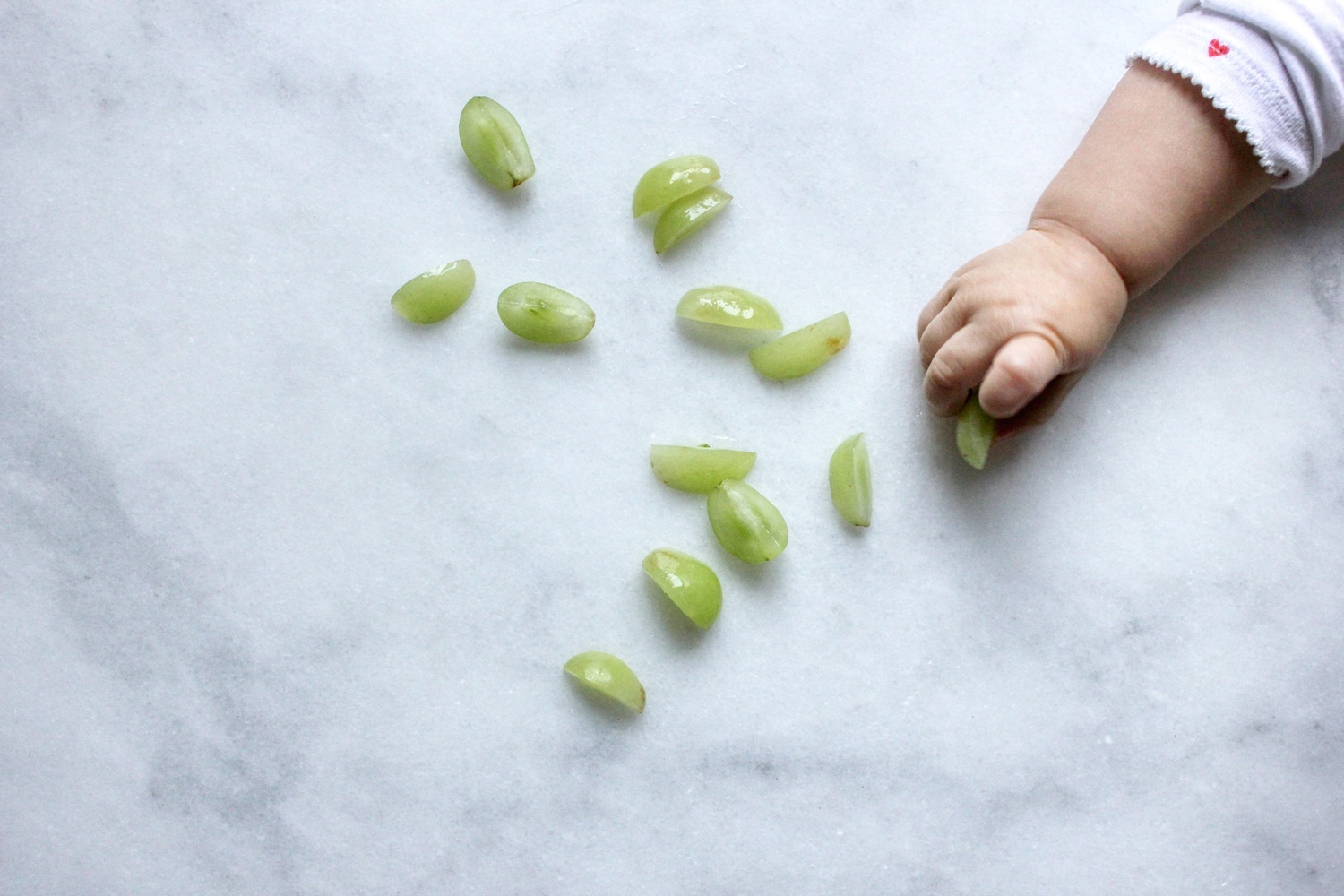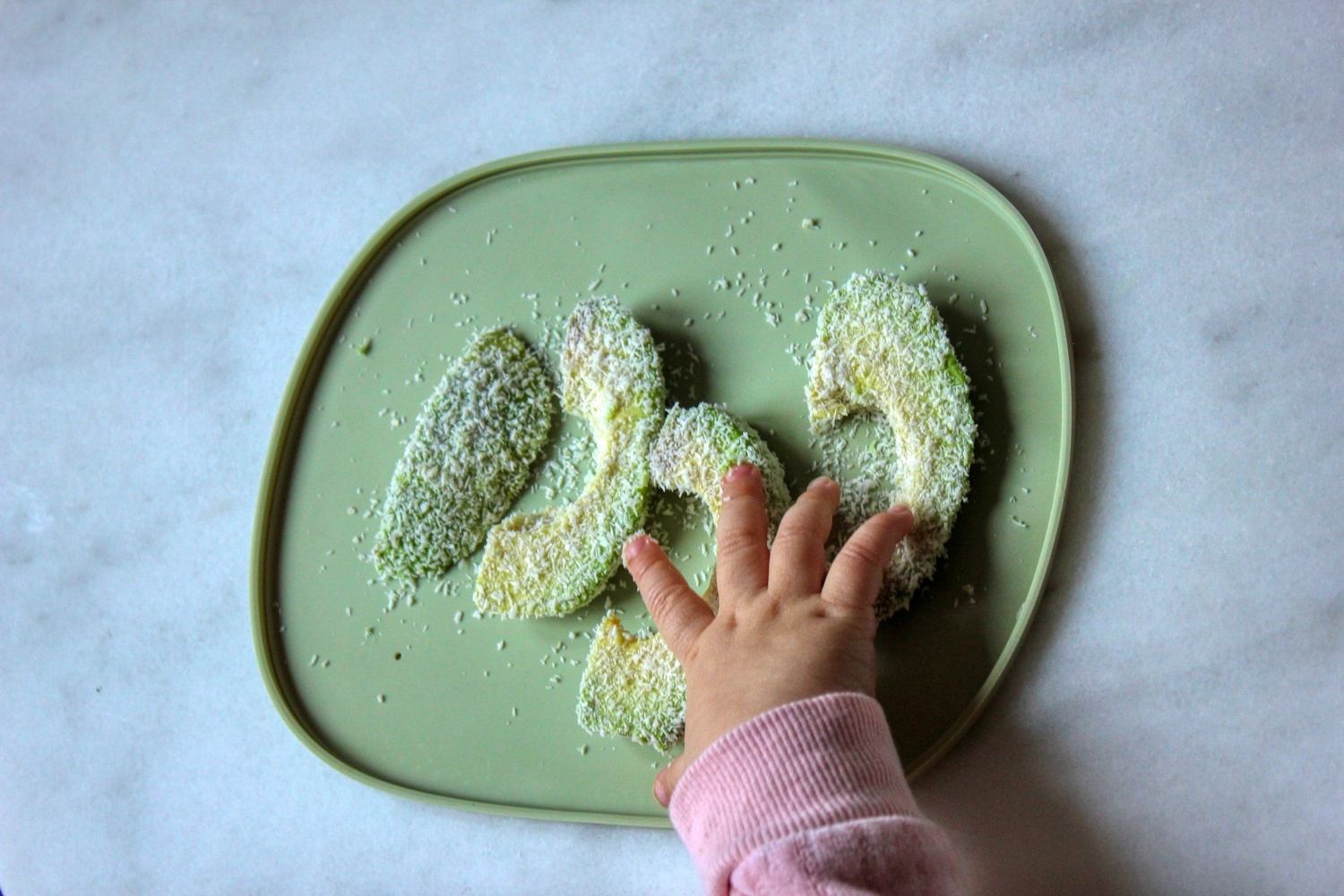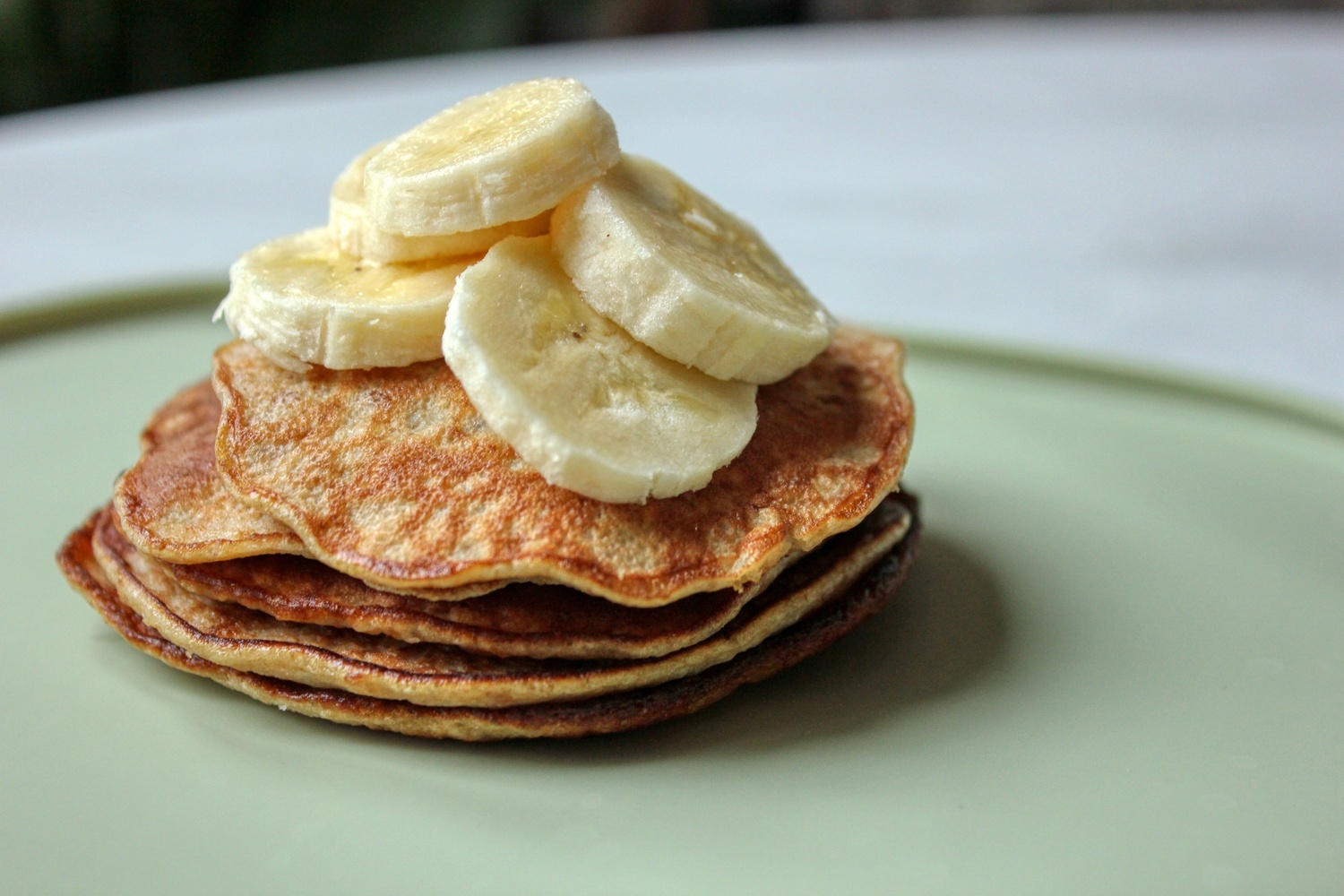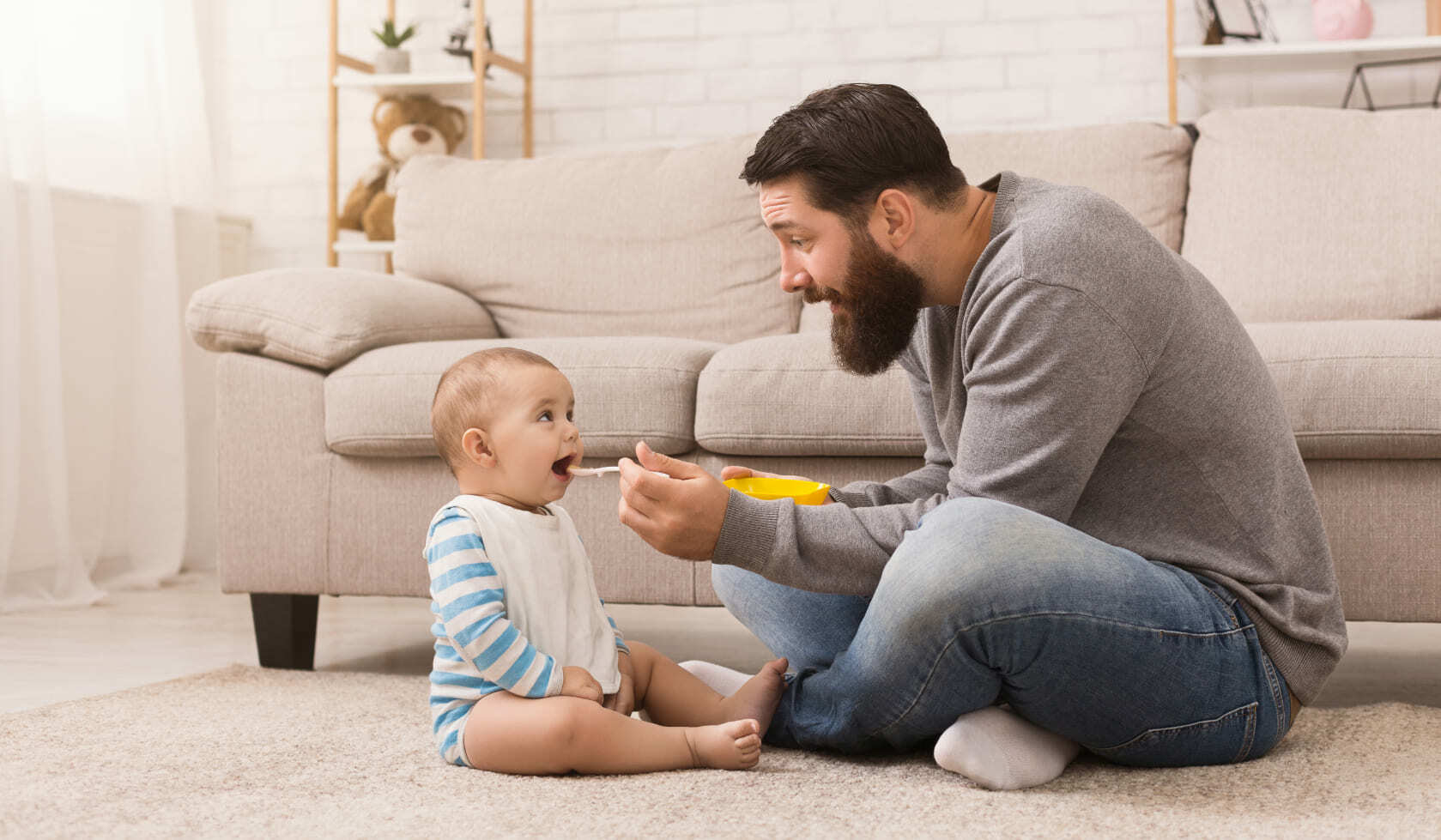Introducing finger foods safely
Finger food, the term says it all: food to eat with your fingers. It has been much-discussed in recent years due to the rise of the Rapley method. Without being for or against the Rapley method, we really recommend also serving food your baby can eat independently.
Written by Ine De Bruycker, preverbal speech therapist at ReminCare

From an oral-motor point of view, a baby can learn to chew from the age of 8 months. This critical period lasts until the age of about 10 months. The term 'critical period' means that this is an important time to teach your baby how to chew. There are still some reflexes present which help to learn this new skill. After 10 months, it remains possible but learning to chew becomes much more difficult. Only around the age of 4 to 5 years can a child chew in an 'adult way'. A learning process that should certainly not be underestimated!
At what age should I give my baby finger food?
Does this mean that you can only give finger food from the age of 8 months? No, between 6 and 8 months your baby can certainly gain experience with finger food if he or she has mastered spoon feeding! If you're unsure about when to start weaning in general, we have written an article that will help you determine whether your baby is ready or not. Your baby will occasionally gag at first. Don’t worry, it’s normal. Neurological maturation (the gag reflex in babies must move from the front more to back in the mouth) and frequent practice will help reduce this. Gagging also helps your baby learn when something is safe enough to swallow. Does the gagging happen constantly? Take a step back and offer some softer food.
This early practising is not really chewing. Your baby will not bite off a piece with the front teeth and move it back and forth between the molars or gums with the tongue. But your child can munch on food, making it soft and ready to be swallowed.
When giving finger foods, it is important to take this into account. Always keep an eye on your child. Do you feel that your baby is not ready for solid food at exactly 6 months? Then wait another week and try again. Are you worried or in doubt? A speech therapist can always help. Above all, always watch your child. It should be fun for both you and your baby to practise.
In addition to oral motor development, fine motor development (grasping things, bringing things to the mouth, etc.) also plays an important role. Your child will usually be able to grasp things with their hands between 5 and 6 months (these are guidelines and no fixed ages). From then on, your child will only get better at it and his movements will become more focused, stable and varied. Around the age of 6 months, larger objects are easier for your baby to hold.
A short checklist to help you observe if your child is ready for finger foods:
- Can your child (supported) sit up and hold his/her head straight?
- Is spoon feeding going well?
- Does your child show interest in solid food?
- Can your child grasp larger objects or things and bring them to the mouth?
If the answer is always 'yes', you can try offering finger foods. Not successful? No problem! Just wait a little longer and try again a week later.
What size should my baby's finger food be?
When starting with finger foods, at the age of 6 months, we need to make sure our babies can grab the food with their fists. At that age, the pincer grasp (using the thumb and index finger to grab small pieces) is not developed yet so your baby will use his fist to grab different objects and foods.
An appropriate size to accommodate this method of grabbing is the size of two adult fingers. Hold your index and middle finger out next to each other. Use that as a measurement for your food pieces. Make sure the foods you serve are soft enough to squeeze between your thumb and index finger. If not, make sure your baby can’t bite off a piece of the food. For example, you can let your 6 month old suck on a piece of steak, but you can’t give them a piece of raw apple because they could bite off a piece that’s too hard for them to chew.
Once your baby has mastered the pincer grasp, you can switch to smaller pieces. The pincer grasp usually develops at around 9 months old. This could be a bit later as well. Watch how your baby evolves and if you notice she starts grabbing smaller objects with her thumb and index finger, you can start chopping up your food a bit smaller. The texture rules still apply here though.
Are you unsure about the texture of something or wondering if the avocado you just bought is ripe and soft enough for your 6-month-old? Try it out for yourself and feel! Does the food melt in your mouth when you munch on it? Then you can safely give it to your 6-month-old. Do you have to move it back and forth in your mouth and do you tend to start squashing it (imagine you have no teeth)? Then it is advisable to wait a bit longer until your child is ready.
It's important to note that this breakdown of suggestions by age assumes that you have started giving finger foods at 6 months. If, for any reason (which is perfectly ok!), you have started feeding solids later, it is important to keep following these developmental steps! It is not the case that if you only start at 8 months, you can skip "the previous step" altogether. It is always important to build up steadily in terms of difficulty! So when you start giving finger foods at 8 months, use the suggestion list for the 6-month age. Only when you see that your baby is doing well (it is normal for your baby to need a few weeks for this) try more difficult foods. Ask for advice when in doubt!

Best first finger foods to start with
A good finger food to start with is steamed vegetables like carrots, parsnips, sweet potatoes or broccoli and cauliflower florets. Since we’re just starting, keep the florets big enough and cut the other vegetables the size of two adult fingers, making sure you can squeeze them between your thumb and index finger.
You can also mix it up with soft fruits like mango, banana, melon,... Fruits can be a bit trickier to grab for babies, since they can be a bit slippery. A solution can be to keep part of the skin on, and that will be the part that they grab. The skin of the upper part is removed and your baby can munch on that. In reality it’s hardly ever that controlled, so keep an eye on your baby and make sure they’re not eating the skin.
Another solution can be to roll the fruit in shredded coconut, almond powder, hemp or flax seeds. It makes the exterior a bit rougher and easier to hold on to and you have the added nutrients. Make sure your baby is not just sucking the outer layer off and then waiting for you to cover it again. If you want to serve apples, steam them until soft.
As protein, you can serve an omelette, cut the size of 2 adult fingers. You can also serve scrambled eggs. Feel free to try both and see which one works best. The more textures your baby gets to know, the better. You can also serve some soft tofu strips or even a softly cooked cannelloni (big type of pasta).
More advanced baby finger foods
Once your baby has mastered the pincer grasp, which is usually at around 8 to 9 months but can also be a bit later, you can switch to smaller pieces. This will challenge your baby again to practice this pincer grasp and to really put a whole piece of food into her mouth, not just chew on bigger pieces. Also, your baby will now be able to move this small piece back and forth in her mouth with the tongue, mix it with saliva and move it backwards in her mouth to be swallowed. Your baby is now really learning to chew. Keep the pieces soft and small in the beginning! Only when your child has acquired their first molars will they be able to crush food and you can start with slightly harder pieces (a thin slice of apple, a small block of cheese).
Important to note: by 'a small piece' we really mean a small piece of, say, half a centimetre. Start with this and build up the size slightly (over a number of weeks). Take into account the do's and don'ts at the bottom of this article, for safety.

Here are some finger food suggestions for the age of 8-9 months:
- Halved raspberries or halved blueberries
- Small pieces of cooked salmon
- Small pieces of pancake
- Roasted aubergine pieces
- Soft boiled peas or black beans - squashed a bit between your fingers
- Small pieces of meatball, chicken, etc.
- A small piece of mozzarella
Another very convenient baby finger food is all kinds of patties. They can be vegetarian or not but they are a great way of using up whatever you still have in your fridge.
Strips of lightly toasted bread are another great finger food that you can give on a daily basis. You can play a bit with different spreads and dips to keep it interesting and extra nutritious. Nut butter or hummus are great options that can be eaten daily.
Pancakes are a super nice breakfast finger food for your baby. Make pancakes with bananas or sweet potatoes, to keep it nutritious, and keep it sugar free. This way pancakes can be on the menu several times per week. Make big batches so you can just freeze them and take them out whenever you don’t feel like cooking!
A few baby finger food do’s and don’ts
- Always watch your child while eating. If something goes wrong, she might go completely silent and you won’t be able to notice it if you’re not watching.
- Always make sure you can squeeze the food between your thumb and index finger.
- Avoid serving foods with a round shape (such as grapes or cherry tomatoes) or cut foods into round shapes (such as thickly sliced carrot). Always go for more rectangular shapes or smaller cubes.
- Even if your baby is just sucking on the food in the beginning, don’t worry, she’s learning and taking in some of the nutrients on the way.
- Crushing round foods like blueberries, chickpeas or pomegranate is a great way of safely serving them.
- If you let your child chew on a peapod, crush the peas inside beforehand, so they don’t pop out.
- Avoid feeding your child finger foods yourself. Let them pick it up, feel the texture and the size and put it into their mouths.Don’t force your child to eat something, especially not finger foods.
- Finger foods that you should not give before the age of 2 to 4 years because of a higher risk of choking: popcorn, hard candies or biscuits, hard raw vegetables, hard, tough bread or crusts, fish with bones, round shapes like melon balls, whole grapes or cherry tomatoes, whole nuts or dried fruit (dates, sultanas,...)
What if my baby doesn't like finger food?
If you want to introduce your child to a particular food but he/she is not ready for it yet, you can still offer it through a food dummy. This is a larger dummy with a silicon sieve into which you can put food. By sucking or licking it, your baby can already taste many flavours of foods which are still too difficult to eat on their own.
So there are many ways to let your baby discover finger foods. Above all, discover new, fun things together. Try, feel, look, taste and experience, but always with your child's capabilities in mind. Grimacing, crying, frequent retching, choking, anger, turning the head, swatting away food, etc. are signs that your child is not ready or doesn’t really like the food. So should you stop offering it altogether? No, definitely not. Just think about how you can make it easier. Eating should not be a struggle, but above all it should be fun and enjoyable. Enjoy it!
Written by Ine De Bruycker, preverbal speech therapist at ReminCare
Get our Complete Finger Food Guide
Our short and snappy hands-on cheat sheets tell you everything you need to know to get a quick kick-start and provide day-to-day guidance on some of your child’s most exciting milestones.

Safely serving finger food to babies
Serving baby finger foods is something that still scares many parents. Since finger foods are such an essential part of the food journey, it's important to know how to introduce them safely. Trust us, a whole world will open up!



